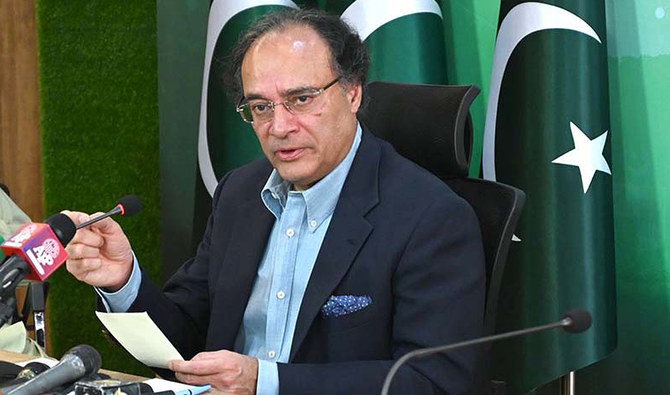Pakistan’s Finance Minister Muhammad Aurangzeb has announced plans to raise the country’s tax-to-GDP ratio from 10.2% to 11% this fiscal year, as part of ongoing IMF-supported reforms aimed at ensuring fiscal discipline and economic recovery. The government is expanding its tax base by bringing agriculture, retail, and real estate sectors into the tax net, supported by technology-driven systems and digital compliance tools.
KARACHI: Pakistan plans to increase its tax-to-gross domestic product (GDP) ratio from the current 10.2 percent to 11 percent this year, Finance Minister Muhammad Aurangzeb announced on Thursday, highlighting Islamabad’s ongoing push for fiscal reform and economic stability under its $7 billion International Monetary Fund (IMF) program.
The minister was speaking at a policy event hosted by the Atlantic Council in Washington, where he outlined Pakistan’s efforts to expand its tax base and improve revenue collection efficiency through digital transformation, artificial intelligence (AI) analytics, and enhanced compliance frameworks.
“He reaffirmed the government’s commitment to raise the tax-to-GDP ratio from 10.2 percent to 11 percent this year, and to 13 percent over the medium term, ensuring fiscal sustainability,” the Finance Ministry said in a statement following his address.
Expanding the Tax Net
Pakistan, a country of over 240 million people, continues to struggle with one of the lowest tax-to-GDP ratios in South Asia, largely due to widespread tax evasion and a narrow formal tax base. To tackle this, the government has introduced measures to bring untaxed sectors — including agriculture, retail, and real estate — into the formal system.
The government also aims to leverage technology-driven solutions, such as AI-powered audit tools and automated data tracking, to improve transparency and plug leakages in the revenue system.
Record-High Tax Target for FY2025–26
Earlier in June, Prime Minister Shehbaz Sharif’s administration set a record tax collection target of Rs14.13 trillion ($47.4 billion) for the 2025–26 fiscal year, marking a 9 percent increase from the previous fiscal year.
Officials believe achieving this ambitious target will be key to reducing reliance on foreign borrowing and strengthening Pakistan’s fiscal sustainability. To support this effort, the government recently approved a modern digital ecosystem for the Federal Board of Revenue (FBR) and introduced simplified online tax return systems to encourage voluntary compliance.
Signs of Economic Stabilization
Pakistan’s economy, which faced severe fiscal stress and default fears over the past two years, has shown signs of stabilization following the IMF’s $7 billion bailout program. The package helped restore foreign exchange reserves, stabilize the rupee, and improve investor sentiment.
Inflation — which had surged to record highs in 2023 — has since moderated, while sovereign bond spreads and credit ratings have shown gradual improvement.
“The government’s disciplined fiscal management has restored confidence, improved sovereign spreads and contributed to the first current account surplus in 14 years,” said the finance minister.
Monetary Stability and Reforms Ahead
Minister Aurangzeb also reiterated Pakistan’s commitment to a market-based exchange rate policy, managed under the State Bank of Pakistan (SBP), ensuring competitiveness while maintaining external stability.
“Productivity gains and structural reforms are as vital as external price competitiveness in sustaining export growth,” he said, underscoring the government’s focus on long-term reform rather than short-term relief measures.
The Road Forward
With renewed international confidence, Pakistan’s government is moving ahead with a three-pillar strategy focusing on:
- Revenue Mobilization and Tax Broadening
- Privatization of Loss-Making State Enterprises
- Digital and Energy Sector Reforms
The Finance Ministry emphasized that achieving the 11% tax-to-GDP goal is critical not only for meeting IMF benchmarks but also for ensuring fiscal independence, reducing external debt dependence, and laying the foundation for sustainable growth in the coming years.




